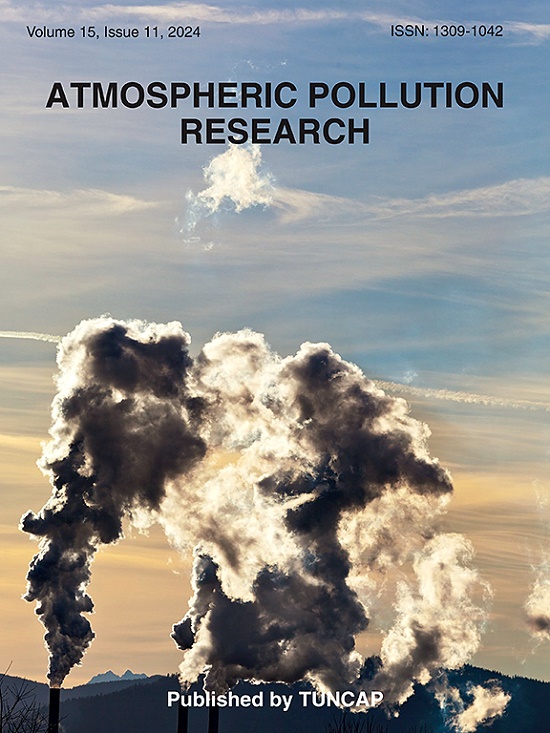Spatiotemporal assessment of lead (Pb) and cadmium (Cd) contamination in urban tree rings near an industrial smelter: high intraspecific variability but limited spatial differentiation
IF 3.5
3区 环境科学与生态学
Q2 ENVIRONMENTAL SCIENCES
引用次数: 0
Abstract
Assessing lead (Pb) and cadmium (Cd) concentration in tree rings may provide historical records of environmental contamination, capturing temporal changes and spatial distribution. This study examined heavy metal (HM) bioaccumulation in tree rings to assess the impact of smelting activities using urban trees. Tree rings from urban conifers were collected within a 5 km radius of the smelter to estimate spatiotemporal trends of Pb and Cd concentrations, evaluating the outcomes of contamination reduction measures and interspecies bioaccumulation patterns. Pb isotopic ratios (206Pb/207Pb, 208Pb/206Pb) were also measured to evaluate the Pb origin. Results showed no clear spatial pattern in relation to distance to the smelter, which may be due to the small sampling area. However, Cd bioaccumulation in urban pine was 4–7 times higher than in the distant site, 80 km away, indicating a local impact of industrial contamination in the urban area. Temporal analysis for pine showed a decrease of 0.27 mg/kg Cd (47 %) between 1990 and 2020, reflecting the potential influence of contamination-reducing measures, while Pb concentrations in pine were 2.7 times higher (increased by 0.06 mg/kg) for the same period. Pine bioaccumulated more Cd than spruce, while spruce accumulated higher levels of Pb compared to pine. Isotope measurement confirmed that the copper smelter is the primary source of Pb. These findings underscore the complex nature of HM uptake in urban trees and suggest that further research is needed to understand the spatiotemporal effects on HM bioaccumulation patterns and which species are best suited for phytoremediation.

工业冶炼厂附近城市树木年轮中铅和镉污染的时空评价:种内高变异性但空间分异有限
评估树木年轮中铅(Pb)和镉(Cd)的浓度可以提供环境污染的历史记录,捕捉时间变化和空间分布。本研究考察了树木年轮中重金属(HM)的生物积累,以评估利用城市树木冶炼活动的影响。在冶炼厂周边5公里范围内收集城市针叶树年轮,估算Pb和Cd浓度的时空趋势,评估污染减少措施的结果和种间生物积累模式。测定Pb同位素比值(206Pb/207Pb、208Pb/206Pb),评价Pb的来源。结果显示,与冶炼厂的距离没有明显的空间格局,这可能是由于采样面积小。然而,城市松木的Cd生物累积量是80 km外的4-7倍,表明工业污染对城市地区的局部影响。时间分析显示,1990 - 2020年期间,松木的铅浓度下降了0.27 mg/kg(47%),反映了污染减排措施的潜在影响,而同期松木的铅浓度则增加了2.7倍(增加了0.06 mg/kg)。松木的Cd累积量高于云杉,而云杉的Pb累积量高于松木。同位素测量证实,铜冶炼厂是铅的主要来源。这些发现强调了城市树木HM吸收的复杂性,并表明需要进一步的研究来了解HM生物积累模式的时空影响以及哪些物种最适合植物修复。
本文章由计算机程序翻译,如有差异,请以英文原文为准。
求助全文
约1分钟内获得全文
求助全文
来源期刊

Atmospheric Pollution Research
ENVIRONMENTAL SCIENCES-
CiteScore
8.30
自引率
6.70%
发文量
256
审稿时长
36 days
期刊介绍:
Atmospheric Pollution Research (APR) is an international journal designed for the publication of articles on air pollution. Papers should present novel experimental results, theory and modeling of air pollution on local, regional, or global scales. Areas covered are research on inorganic, organic, and persistent organic air pollutants, air quality monitoring, air quality management, atmospheric dispersion and transport, air-surface (soil, water, and vegetation) exchange of pollutants, dry and wet deposition, indoor air quality, exposure assessment, health effects, satellite measurements, natural emissions, atmospheric chemistry, greenhouse gases, and effects on climate change.
 求助内容:
求助内容: 应助结果提醒方式:
应助结果提醒方式:


